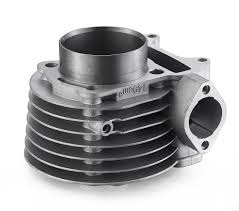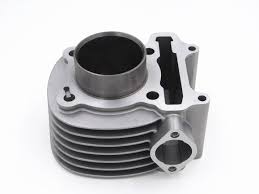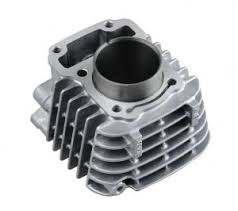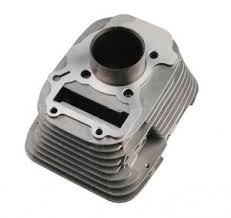I. Strengthening the management of transplanted rice fields in the right season Currently, in addition to completing normal field management operations in a timely manner (such as seedling recruitment, shallow water irrigation, early application of fertilizer, and chemical weeding), we must also focus on the prevention and control of pests and weeds and control of seedlings in the field according to the special circumstances this year. Big technology: First, pest control. Affected by the warm winter and persistently droughty high-temperature weather, the wintering base of locusts is large and the area is wide; leafhoppers begin to appear in larger areas. Therefore, it is expected that this year will be the year in which diseases and insect pests are emphasized. Plant protection agencies throughout the country should strengthen their investigation and forecasting work, make full use of relevant media such as television, radio, newspapers and periodicals, disseminate disease and insect information, drug selection, application period, dosage, and methods to households, apply drugs timely and symptomatically, and reduce pests and diseases. Loss of disasters. The second is the control of seedlings in the field. In the Sichuan Basin, farmers suffering from persistent droughts have a strong “sigh of water†ideology. As long as there is water, the fields must be filled; in Yunnan, because of continuous low temperature and rain, the quality of the early seedlings is weak, and the tillering occurs after being planted in Honda. slow. All localities should be able to select the appropriate time and degree in the field under the guidance of the local agricultural technology department. This will not only save water, but also capture high rice yield. 2. The most urgent task in the arid area of ​​the Sichuan Basin is to work well for the “preservation of seedlingsâ€. In areas where the rain is late, and where there is a shortage of water after the planting, only the seedlings are kept to preserve hope. The main measures include: First, expand the source. Relying on artificial precipitation, mining groundwater and other means, we tried our best to keep seedlings in Putian. For the fields that have already been transplanted, make every effort to make up the water once and prevent the drought from sowing seedlings. At the same time, measures can be taken to cover the protection and minimize the evaporation of the field. The second is to prevent seedlings. In the seedbed, the technology of “uniconazole impregnation + paclobutrazol†spraying seedlings is vigorously promoted to realize the control of old-age seedlings; in the case of limited water resources, seedlings transplanting and other methods are used in Putian of water-related seedlings to reduce the seedbed per unit area. The amount of seedlings. The third is to promote water-saving cultivation techniques to ensure full planting. Relatively early planting is both a disaster reduction measure and a production increase measure. However, rice must have water in the field, and at the very least, the soil should be saturated before it can be transplanted. Only comprehensive promotion of water-saving cultivation techniques can achieve both relatively early planting and full planting. The main water-saving cultivation measures include uniform water and planting waterlogging to eliminate dead seedlings after transplanting; transplanting armpits, no-tillage and hole-drilling, and planting water pipes to reduce water evaporation. In the alpine mountains can also promote mulching techniques. Third, the scientific management of late rice cultivation The key technology for late-planting rice in disaster-reducing cultivation is the following: First, when transplanting, the amount and density of pods should be appropriately increased. If the pods are too tall, some of the tip can be removed. The second is that the application of fertilizer emphasizes the early recovery of heavy-bottomed rice. Rice that was transplanted after June 5th promotes “basic fertilizer and clear waterâ€. The third is the prevention and control of aphids in the booting stage to reduce the loss of "white spikes". If the seedlings have already started jointing in Putian, they can be cut at 35-40 cm from the ground after transplanting, and the young seedlings will be stored and strengthened for management in order to capture the high yield of the ratooning rice (over 350 kg per mu).
A Cylinder Block is the structure which contains the cylinder , plus any cylinder sleeves and coolant passages. In the earliest decades of internal combustion engine development, cylinders were usually cast individually, so cylinder blocks were usually produced individually for each cylinder .
A Cylinder Head is usually located on the top of the engine block. It serves as a housing for components such as the intake and exhaust valves, springs and lifters and the combustion chamber. This page covers the main function and various designs of cylinder heads, and their causes and symptoms of failure.
The passages in the cylinder head allow air and fuel to flow inside the cylinder while permitting the exhaust gases to flow out of it. The passages are otherwise called ports or tracts. The cylinder head also channels the coolant into the engine block, thereby cooling down the engine components. The cylinder head uses a gasket that aids in preventing water or oil from leaking into the combustion chambers.
Cylinder Block Cylinder Block,Engine Cylinder Block,Aluminum Mold Cylinder Block,Aluminum Die Casting Cylinder Block Ningbo Jinyao Machinery Company. LTD , https://www.cardiecastingmold.com




Field management technical advice for mid-season rice in one season in the southwest rice region
In the first season of the southwestern japonica rice region, the geographical span is large, and the meteorological conditions are significantly different. At present, except for some rice fields in the Sichuan Basin that were planted due to drought and other rains, most fields in the rice region have entered the management stage of Honda. This stage is not only the key time to promote the harvest of sufficient effective panicles, but also an important period for the future to lay a solid foundation for the production of high-yielding crops, as long as the technical measures are in line, it can completely make up for the adverse effects of the previous period. Therefore, all localities should, according to the specific circumstances, timely refer to seedlings, and provide guidance on classification and effectively strengthen medium-term management.